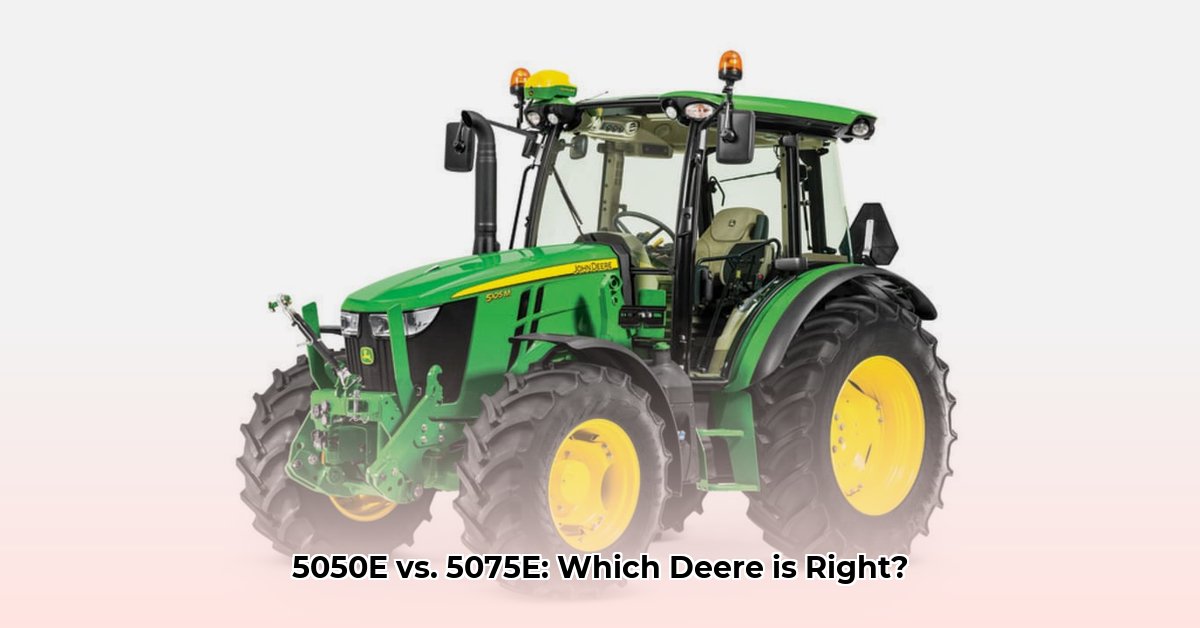
Choosing between a John Deere 50 and a 5050E tractor is a significant decision impacting farm efficiency and long-term costs. This detailed comparison analyzes key differences to guide your upgrade choice. Both offer 50 horsepower, but their technological advancements, features, and operating costs vary considerably. For more information on other John Deere models, check out this helpful resource: John Deere Tractors.
Shifting Gears: Transmission Technology
The most striking difference lies in the transmission. The John Deere 50 features an unsynchronized transmission, requiring more effort and skill for gear changes. This translates to operator fatigue, reduced efficiency, and a less comfortable workday. The 5050E, conversely, boasts a synchronized shuttle shift transmission. This allows for smoother, easier gear changes, minimizing operator strain and increasing overall productivity. Isn't a smoother, less tiring workday worth considering?
Engine Performance and Efficiency
While both tractors deliver 50 horsepower, the 5050E's diesel engine offers significant operational advantages. Diesel engines are known for their greater fuel efficiency compared to the gasoline or alternative fuel options in the older 50 model. This translates to lower running costs over the tractor's lifespan. Moreover, the 5050E's engine meets stringent Final Tier 4 (FT4) emission standards, ensuring environmental compliance and potentially mitigating future regulatory hurdles. Does the long-term fuel savings and environmental responsibility of the 5050E outweigh the initial cost difference?
Operator Comfort and Ergonomic Design
Operator comfort significantly impacts productivity and overall well-being. The 5050E prioritizes this with standard power steering (optional on some later 50 models), reducing strain and improving the overall driving experience. This seemingly small upgrade contributes significantly to operator satisfaction and reduces fatigue at the end of a long workday. The 50, however, offers a more basic operator experience. How important is operator comfort in relation to your daily workload and overall health?
Feature-by-Feature Comparison
The following table summarizes the key differences between the John Deere 50 and 5050E tractors:
| Feature | John Deere 50 | John Deere 5050E |
|---|---|---|
| Transmission | Unsynchronized | Synchronized Shuttle Shift |
| Engine Type | Gasoline/Alternative Fuels | Diesel |
| Emission Standards | Era-specific (less stringent) | Final Tier 4 (FT4) |
| Power Steering | Optional (on later models) | Standard |
| Operator Comfort | Basic | Significantly Improved |
| Maintenance Complexity | Generally simpler | More complex, due to advanced tech |
Total Cost of Ownership: A Long-Term Perspective
Choosing between these tractors requires careful consideration of the total cost of ownership (TCO). The initial purchase price of the 50 is generally lower, but the 5050E's fuel efficiency and reduced maintenance downtime could offset this over time. Maintenance costs might be lower for the 50 due to its simpler design, but the 5050E's advanced features may require specialized servicing. Resale value is another critical factor; the 5050E's modern technology might command a higher resale price. Could the long-term operational savings of the 5050E justify its higher initial cost?
"A thorough TCO analysis requires detailed cost tracking, considering purchase price, fuel consumption, maintenance, repairs, and resale value," states Dr. Emily Carter, Agricultural Engineering Professor at the University of Illinois. "Factor in your operational needs and expected lifespan to reach an informed decision."
Making the Right Choice
The ideal tractor depends on individual needs and budget. A used John Deere 50 might suffice for smaller farm operations needing a simple, reliable machine. However, the 5050E’s superior comfort, efficiency, and advanced features justify the higher price for larger operations or those prioritizing operator well-being and long-term cost optimization. A comprehensive cost-benefit analysis, comparing projected expenses over the tractor's lifespan, is crucial for making an informed decision.